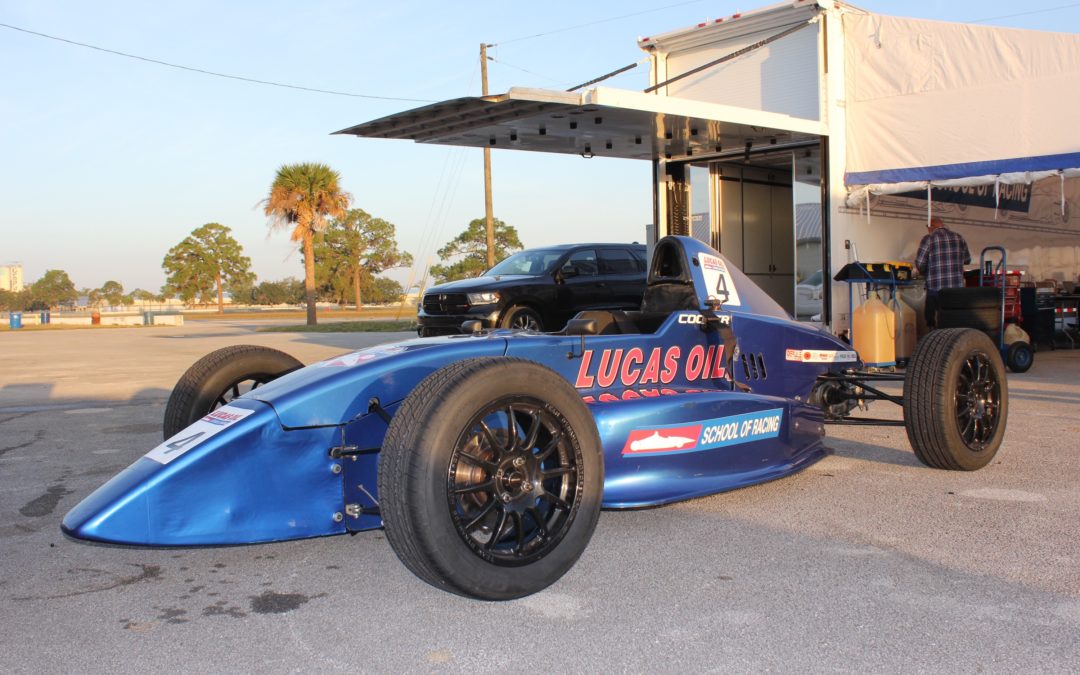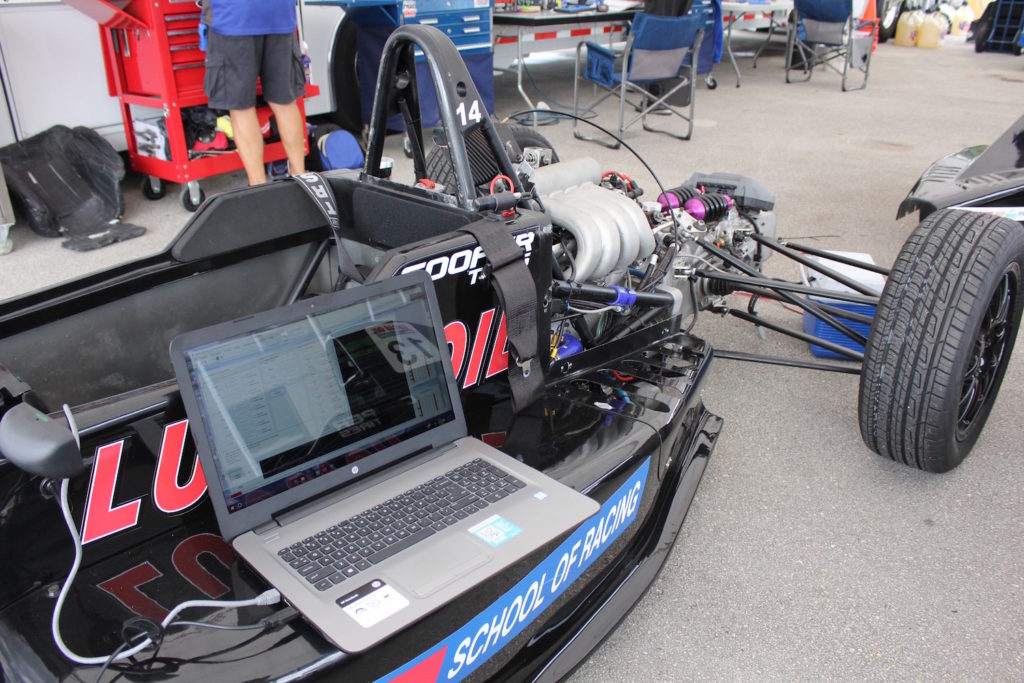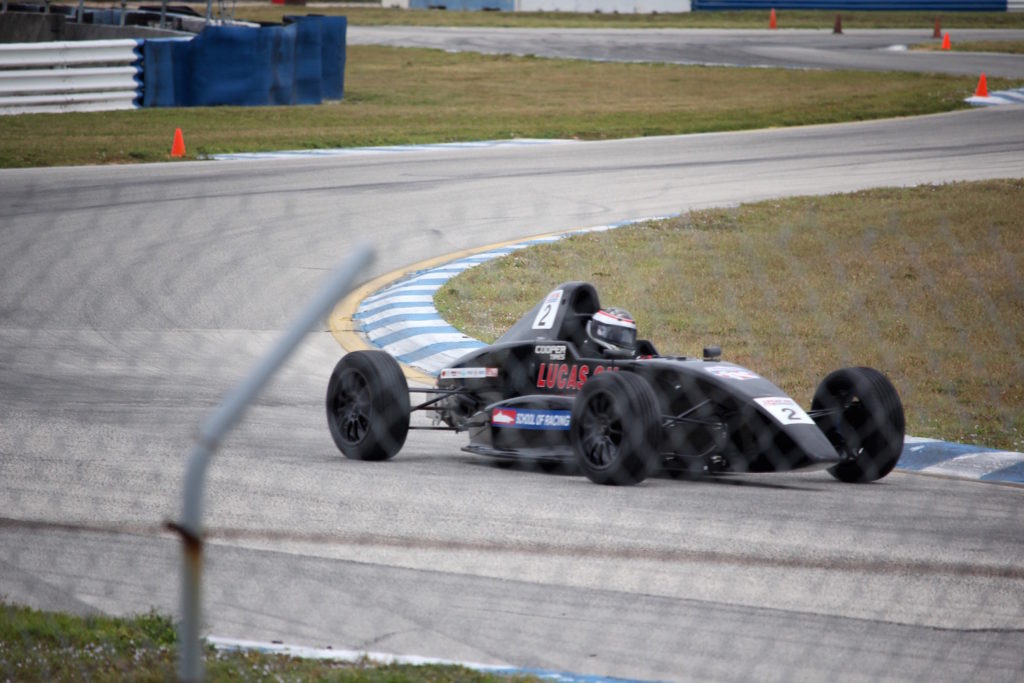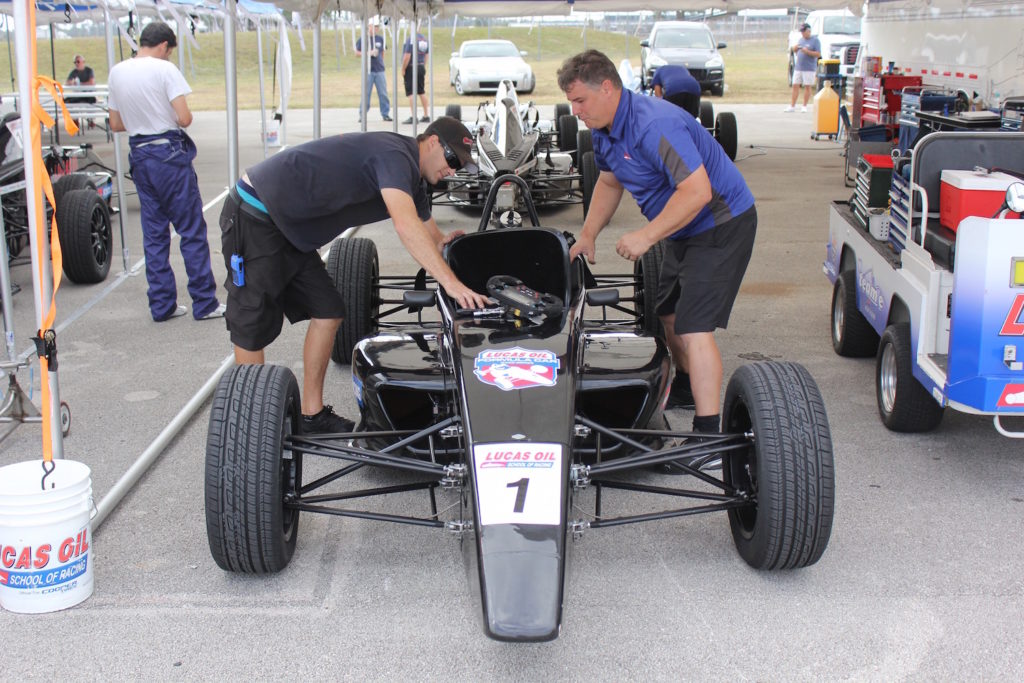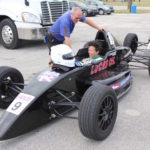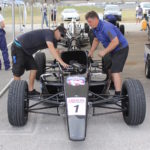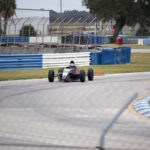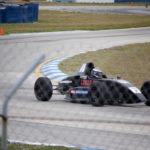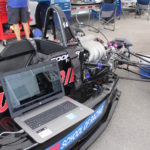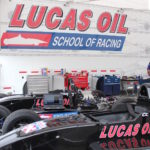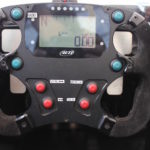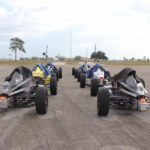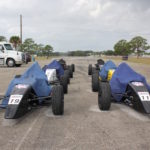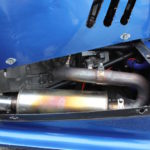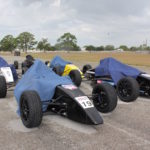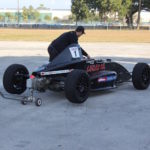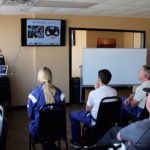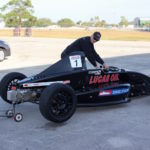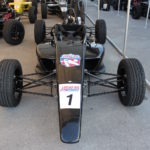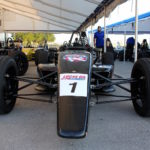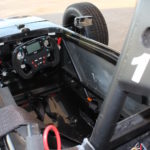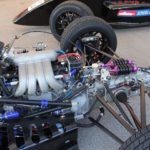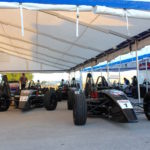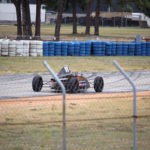This is a safe place; it’s ok to admit it: you believe you’re an incredible driver. There isn’t a car out there that makes you uncomfortable; you’ve never been in an accident; you’re in complete control. Maybe it doesn’t happen every day, but there’s a good chance you’ve felt this way before.
It’s easy to feel elite on America’s streets and highways, especially if your eyes aren’t focused on a smartphone. Most drivers can barely stay in his or her lane with so many distractions. But how do you know for sure if you’ve got Ayrton Senna-level talent hidden within you? Local track days are a great place to start, but that assumes you have the right whip. Track days also can’t simulate the ardors of wheel-to-wheel competition unless you possess a racing license.
What you need is a controlled environment, the right equipment, and qualified instructors. It’s time to enroll in racing school.
Racing School, Version 2.0
Type “racing school” in Google and two names will pop up immediately: Skip Barber and Allen Berg. These programs have been training drivers for SCCA (Sports Car Club of America) and professional racing for years, which might lead you to assume that they’re best of breed. Certainly, both curriculums feature superb instruction and Formula-style cars, but they also carry a heavy price tag. For a two-day Skip Barber racing school, be prepared to shell out between $4,000 and $6,000, depending on the host track. Allen Berg asks $4,500 or more for its two-day course.
That’s a giant chunk of change to dip a toe in the racing world, improve your skills, or simply try a new thrill. Fortunately, there’s a cheaper, and arguable better way. Lucas Oil School of Racing may not have decades of experience, having been established just last year, but it definitely has the right materials for a top-notch academy. It also offers two-day courses at some of America’s best tracks (with more track time than any other two-day school) from $2,995.
It starts with the instructors, who have backgrounds in SCCA, Indy Lights, and IndyCar. Not only do these individuals know the fastest way around a track, they’ve personally groomed some of the most promising talent in motorsports. Lucas Oil School of Racing owner, Neil Enerson, trusts these instructors with the career of his IndyCar-competing son, RC.
The cars aren’t too shabby either. Each Formula-style vehicle features a tube-frame structure, outboard brakes, lay-down pushrod coil-over suspension, single-clutch sequential five-speed transmission with paddle shifters, five-point harness, Cooper 205-section radial tires (not slicks), removable wheel, and digital driver display. Race Sport International assembles each vehicle at its U.K. headquarters specifically for Lucas Oil School of Racing. At the heart of each car is a Mazda-sourced 2.0-liter four-cylinder engine that can deliver up to 170 horsepower to the rear wheels (but is tuned to 140hp for school use). Elite Engines in Wisconsin is responsible for tuning each motor. All told, the open-wheel racers weigh just 1,500 pounds and absolutely fly down a track.
Proving this is a contemporary establishment, Lucas Oil configures every car with a wide-angle camera to capture lapping sessions and pulls corner-by-corner data for each driver to track progress during their two-day course.
Ready to dive in? Lock in those travel accommodations, grab a pair of gloves, and Lucas Oil will take care of the rest.
Day 1
Lucas Oil instructors say their two-day program covers the same material and offers students the same amount of time on track as three-day courses by rivaling programs. How do they pull this off? Paddle shifters. Seriously. According to Lucas Oil’s instructors, most schools provide cars with manual transmissions, and therefore must spend almost an entire day teaching students proper heel-toe shifting techniques.
By using a modern sequential gearbox with steering wheel-mounted paddle shifters (like most professional racing series), drivers can focus on every other part of high-speed maneuvering. It’s so easy to get acquainted with Lucas Oil’s Formula vehicles that we were doing braking drills within two hours of shaking hands with our instructors.
More: Pirelli’s New P Zero Tires Make Good Cars Unbeatable
Before we saddled up in our fancy new open-wheelers (of which there were 20 on hand for a class of six), we filed into a classroom to learn the basics of racing. Though Lucas Oil operates at several tracks across the U.S., my school was hosted at Sebring International Raceway, home of IMSA’s 12 hours of Sebring endurance race. We’d use a portion of the full course that includes several of Sebring’s most famous corners and straights.
The curriculum starts with a PowerPoint presentation detailing the five components of going fast: footwork, weight management, braking, car placement, and track time (practice). During our first 45-minute classroom session, Todd (Lucas Oil’s lead instructor) breaks down complex principles into digestible visualizations.
After reviewing how to maximize a tire’s friction patch, counteract under- and over-steer, threshold and trail brake, and keep our eyes looking ahead in corners, we jumped into our Formula cars for the first time.
As we become acquainted with the weight, grip, brake sensitivity, shifting response, and steering effort of our cars, Lucas Oil’s instructors stage cone markers for braking along a three-turn section of Sebring. In short order, we adjust to the racer’s precision, but it will still take some time to feel confident braking later in corners and getting to the throttle sooner at exit. After our 30-minute drill, we take a short break, refreshing with water and snacks, and then hop right back in our cars for lead-follow laps on the full course. As we trail IMSA Lites champion Gerardo Bonilla, we begin to learn the proper racing line and brake points.
Our second classroom session of Day 1 builds on the basic principles we’ve now learned, covering the fastest line in a given corner, or series of corners, plus how to respond in an emergency situation (loss of vehicle control). After lunch, we’d get to put these lessons to the test.
I can’t believe how much track time we’re allotted on the very first day, and how quickly our class is progressing. After 30 minutes of open lapping, and another 30 minutes of designated passing practice, Lucas Oil School of Racing Day 1 is in the books…and I’m exhausted.
Day 2
After nine hours of stone-dead sleep, I arrive at the track, munch on a bagel, guzzle a few cups of coffee, and find a chair in the classroom.
Things are getting serious now. As my brain finally clicks into gear, it processes Todd’s explanation of passing techniques, drafting, the rain line, and track vision. Fortunately, my peers soaked up yesterday’s training like a sponge and are all ready to get into some wheel-to-wheel drills.
By 10 AM, Lucas Oil’s team of engineers has prepped our cars and is on-hand to help strap us in. Todd reminds us to slowly work our way back to the speed and confidence we had by the end of Day 1. With 30 minutes of lapping practice, we have more than enough time to reconnect with our cars. By now, I know precisely how much brake will lock the wheels, how much throttle will induce over-steer, how much the car is willing to rotate in a given corner. The puzzle pieces are coming together and I’m becoming a tad obsessed.
Before I lose myself completely, Todd calls us back to the pits to de-brief on our next exercise: passing. Reviewing the techniques from earlier that morning, Todd stages an out-braking pass, where one car brakes later than a rivaling car, off the racing line, to cut inside a corner. After each member of the class successful performs a number of passes, we dive right into another practice session. During this series of laps, we’re encouraged to try drafting and blow-by (traditional) passes on each other along the main straightaway.
More: Assetto Corsa Racing Simulator Review
It’s time for our final classroom session, where we learn the basics of a real race. Todd walks us through the stages of a race weekend, including scouting, practice, qualifying, and starting a race, plus a review of what each flag means. He concludes with a friendly admonishment: “You must finish the first few corners to finish the race.” In other words, don’t try to win a race right away. Settle into position, then go to work.
We’ve reached the tail end of our two-day curriculum. This is an opportunity to put everything we’ve learned and experienced together, to demonstrate control at speed, to prove how much we’ve improved.
After another 30 minutes of valuable practice, we stage the start of a race. First, in pairs of two, we follow the safety car for two laps before punching it at the green flag. Rinse, lather, repeat. Then, we go through the same exercise in a single-file line. Each of us is itching to be set loose now. Finally, we get the signal and take off for our final 30 minutes of track time, at full tilt.
Before I coast into the pits and kill the Formula car’s engine, I reflect on what’s felt like a week of intensive driver training. I don’t just know the ins and outs of racing at this point; I know the sensation of genuine competition, the result of every input via the wheel, brake, and throttle, and the thrill of data-backed progress. I’m hopelessly lost in a desire to race every weekend of the year. Too bad Lucas Oil School of Racing can’t facilitate every fantasy…or can it?
Lucas Oil Racing Series
This school may have only been in operation for a year, but its growth plans are tremendous. With unashamed excitement, Mr. Enerson describes expansion to the west coast, Shanghai, Dubai, and beyond. “We’ll have turnkey schools across the globe,” said Enerson. What will actually transpire, and how long it will take, remains to be seen, but what is certain is that Enerson is thinking far beyond the narrow confines of a racing school.
That point has already been proven by Lucas Oil’s new racing series. Like Skip Barber’s own endeavor, Lucas Oil transports cars to iconic tracks, offering an all-inclusive racing weekend experience for a flat fee of $6,497. While that may sound expensive, consider you’ll have a team of mechanics available to prep your car, a day of practice, and two race days. There are cheaper ways to go racing, but few ways to experience this level of competition as an amateur.
I fully blame Lucas Oil’s racing school for my new, expensive compulsion. If you’ve ever wanted to hone your driving skills, prove your natural ability, or just have two days of kick-ass fun, this is the most cost-effective and qualified way to satisfy the urge.

